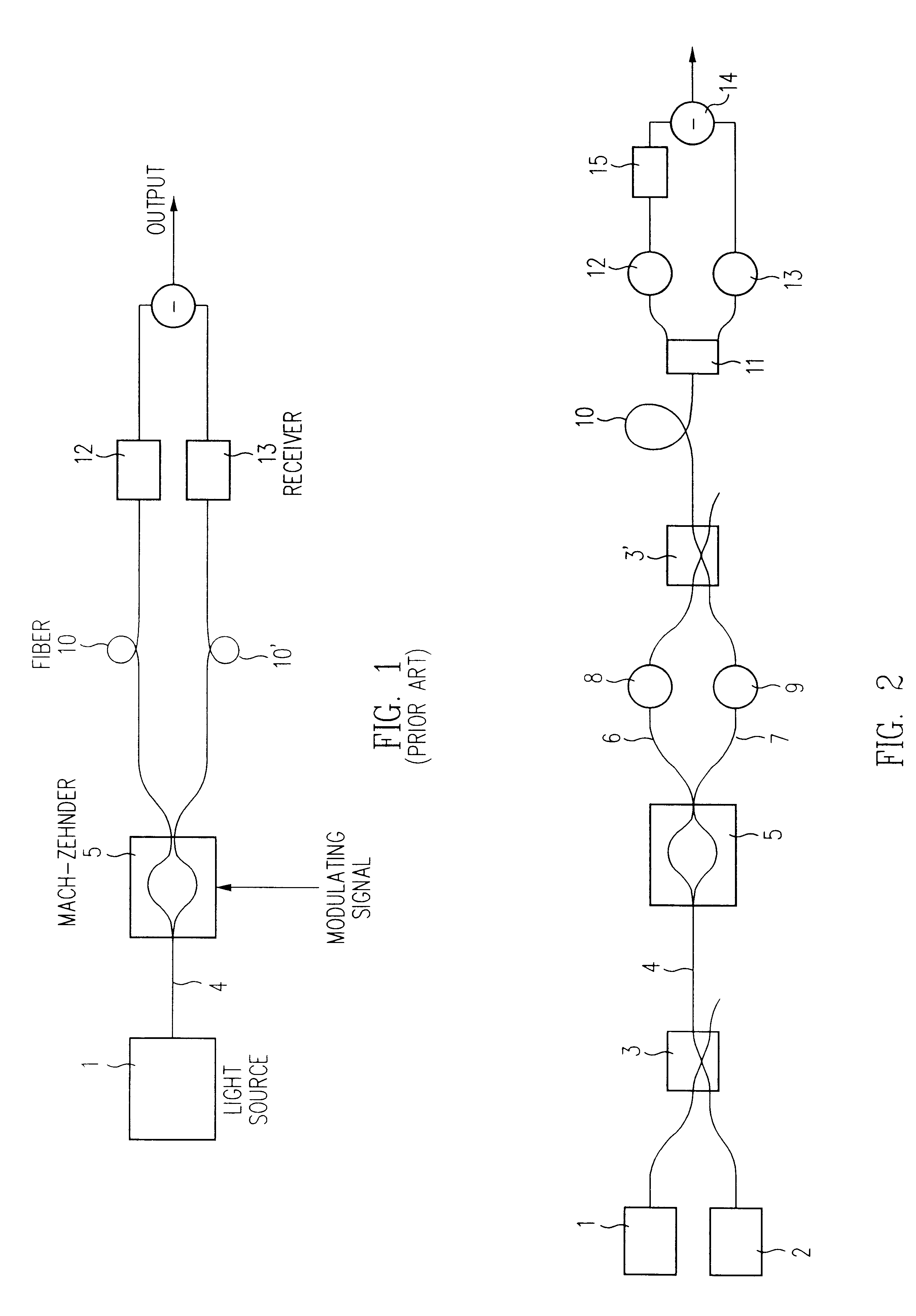Broadband optical transmission system utilizing differential wavelength modulation
a wavelength modulation and optical transmission technology, applied in the direction of transmission monitoring, cladded optical fibre, optical waveguide light guide, etc., can solve the problems of cso and ctb distortions exceeding the required levels, and the above methods suffer from limitations on linearity
- Summary
- Abstract
- Description
- Claims
- Application Information
AI Technical Summary
Problems solved by technology
Method used
Image
Examples
Embodiment Construction
The light in fiber 4 is comprised of two wavelengths W1 and W2 and both wavelengths are modulated equally by the MZ modulator 5. The two outputs of the MZ modulator are however out of phase i.e. when the light intensity increases at the first output 6 due to an applied electrical signal, the light at output 7 decreases. The output 6 will be in phase with the applied electrical signal while 7 will be out of phase. Hence while W1 and W2 are increasing in 6, W1 and W2 are decreasing in 7. Filter 8 then attenuates out the light at W2 leaving W1 in phase with the electrical signal, and filter 9 attenuates the light at W1 leaving W2 out of phase with the electrical signal. The in-phase light at wavelength W1 and out of phase light at wavelength W2 are now combined by coupler 3' into the transmission fiber 10. At the receive end of the fiber 10 the in phase light at W1 is detected by photo-detector 12 and the out of phase light at W2 is detected by photo-detector 13 and the outputs of the ...
PUM
 Login to View More
Login to View More Abstract
Description
Claims
Application Information
 Login to View More
Login to View More - R&D
- Intellectual Property
- Life Sciences
- Materials
- Tech Scout
- Unparalleled Data Quality
- Higher Quality Content
- 60% Fewer Hallucinations
Browse by: Latest US Patents, China's latest patents, Technical Efficacy Thesaurus, Application Domain, Technology Topic, Popular Technical Reports.
© 2025 PatSnap. All rights reserved.Legal|Privacy policy|Modern Slavery Act Transparency Statement|Sitemap|About US| Contact US: help@patsnap.com


